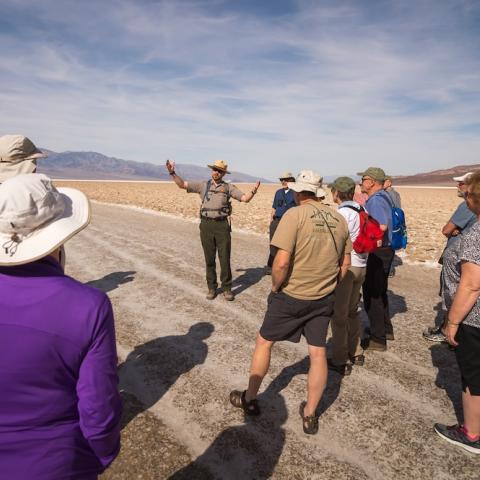
Daytime temperatures that rose to 121° Fahrenheit are believed tied to the death of a California man at Death Valley National Park/NPS
Temperatures rising to 121° Fahrenheit are believed to be related to the death of a 71-year-old man at Death Valley National Park.
The Los Angeles-area man collapsed Tuesday afternoon outside the restroom at Golden Canyon. National Park Service officials believe he had likely just been hiking the popular trail. He was wearing a sun hat and hiking clothes, and carried a backpack. His car was in the parking lot.
Other park visitors noticed the man and were able to use their cell phone to call 911 for assistance at 3:40 p.m. National Park Service and Inyo County Sheriff’s Office responded. Mercy Air’s helicopter was not able to respond due to the high temperature. Park rangers arrived at 3:47 p.m. They performed CPR and used an automated external defibrillator but were not able to save the man.
The Inyo County Coroner’s Office has not yet determined the man’s cause of death. However, park rangers suspect heat was a factor. The official temperature at nearby Furnace Creek was 121°F around the time of his death. Actual temperatures inside Golden Canyon were likely much higher, due to canyon walls radiating the sun’s heat.
Park rangers encourage people to visit Death Valley safely in the summer by sightseeing short distances from their air-conditioned cars or hiking in the park’s cooler mountains. They do not recommend hiking at low elevations after 10 a.m.
This is possibly the second heat-related fatality in Death Valley this summer. A 65-year-old man died on July 3. In that case, the victim was found off the road in a car whose air-conditioner was not functioning in 126° Fahrenheit heat.
According to the National Weather Service, Death Valley has experienced 28 days of temperatures in excess of 110 degrees this year. Heat stroke sets in when the body’s core temperature rises above 104 degrees. Classic signs of heat stroke include throbbing headache; dizziness and light-headedness; lack of sweating despite the heat; red, hot, and dry skin; muscle weakness or cramps; nausea and vomiting; rapid heartbeat (either strong or weak); rapid, shallow breathing; behavioral changes such as confusion, disorientation, or staggering; seizures; and unconsciousness. Seek immediate medical help if heat stroke is suspected.




 Support Essential Coverage of Essential Places
Support Essential Coverage of Essential Places







Add comment